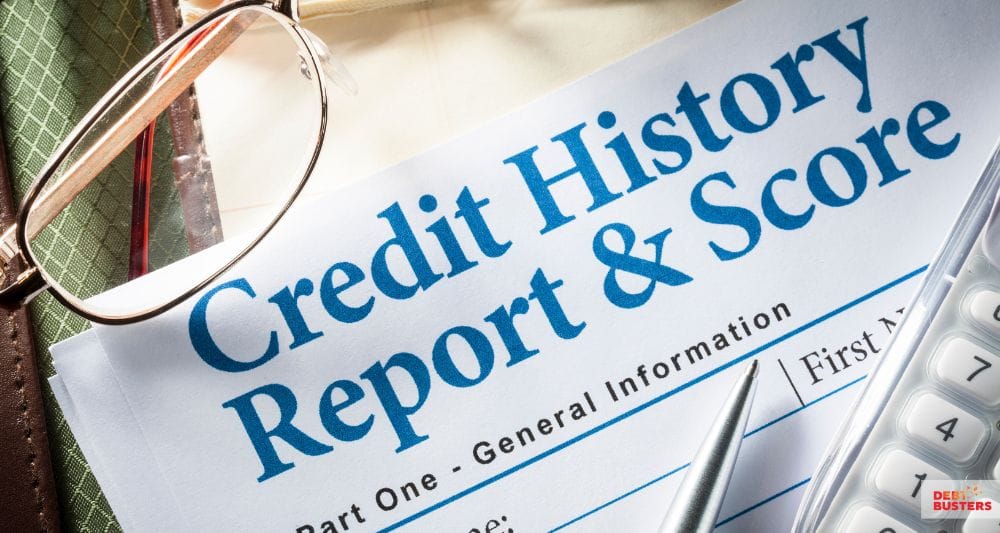
Renting a home is an important step in financial stability, but if you’re in a debt agreement, you might be wondering how it affects your options.
- Will this show up on my credit file?
- Will landlords be hesitant to rent to me?
- How do I juggle rent and debt payments without falling behind?
While landlords may have questions, plenty of renters in debt agreements successfully find homes. The key is understanding how debt agreements impact renting so you can handle credit checks, address landlord concerns, and stay on top of your budget.
So don’t worry—it’s manageable. In this guide, we’ll walk you through what to expect and provide practical steps to help you move forward stress-free.
What is a Debt Agreement, and How Does It Work?
A debt agreement is a formal, legally binding arrangement that helps you take control of your finances without going down the full bankruptcy route. All your unsecured debt is included in one affordable repayment based on what you can afford.
Here’s how it works:
- Debt Agreement Administrator: First, a professional will work with you to create a repayment plan that fits your budget and financial situation. From here, things get easier—you’ll have someone in your corner to guide you through the process.
- Creditor Approval: Unsecured creditors (like credit cards, payday lenders, or personal loans) review your proposal. For your debt agreement to move forward, 50.1% of the total debt amount holding creditors need to agree to the proposal. This means that not every creditor has to say yes—just a majority, which is why you need a well-structured debt agreement proposal.
- Legal Protection: Once approved, creditors can’t chase you for payments or add penalties.
Unlike informal debt agreements, a Part 9 Debt Agreement is governed by the Bankruptcy Act. While it’s technically considered an act of bankruptcy, it’s very different from declaring full bankruptcy—it gives you more control, fewer restrictions, and an easier way to get back on track.
If you want to take control of your finances, contact Debt Busters for a customised debt solution to build a stable, debt-free future.
Will My Current Rental Agreement Be Affected?

If you’re renting, a debt agreement usually won’t cause any issues with your lease. As long as you’re paying your rent on time and in full, your landlord likely won’t have any concerns.
In fact, debt agreements are designed so that you can afford your essential living costs, like rent and groceries, while still paying off your debt in an affordable way. It’s all about giving you some breathing room.
It’s always a good idea to review your tenancy agreement to understand your rights and responsibilities. While rare, some leases mention insolvency arrangements, but this doesn’t automatically mean there’s a problem. If anything seems unclear, a quick chat with your landlord or letting agent can help put your mind at ease.
At the end of the day, the key is keeping up with your rent. Most landlords value steady, on-time payments above anything else. If any questions come up, being open and prepared can help reassure them.
Renting a New Property During a Debt Agreement: Challenges and Solutions

Finding a new rental while managing a debt agreement can feel challenging, especially when credit checks are involved. A debt agreement will show up on your credit file, and some landlords or agents may see it as a risk.
But not every landlord relies on your credit report. Private landlords, for example, often care more about practical assurances like your rental history and ability to pay on time. Here are a few ways to improve your chances:
- Be upfront: Let landlords know that you’ve budgeted carefully to keep up with your rent even with a debt agreement.
- Offer a Guarantor: A co-signer with strong credit can give landlords extra peace of mind.
- Provide References: A letter from a previous landlord that shows you’ve been a responsible tenant can make a big difference.
- Consider a Higher Deposit: If you can afford it, offering a bigger security deposit can ease concerns.
- Get a Letter from Your Administrator: A letter from your debt agreement administrator can confirm that your repayment plan is structured to ensure you can still afford essential expenses like rent. While your debt agreement doesn’t cover rent directly, this reassurance can help landlords feel more confident in your ability to keep up with payments.
While these steps don’t guarantee approval, they can improve your chances. Stay patient, keep an open mind, and remember—there’s a rental out there that’s right for you. It may take some extra effort, but with the right approach, you’ll find a place to call home.
How Debt Agreements Appear on Credit Reports

A debt agreement is listed on your credit file for up to five years and may affect your credit score. Although it’s natural to be concerned about how this will affect your chances of renting, don’t stress too much.
Many landlords care more about your rental payment history than your credit score. The key is being upfront and showing you can meet your rent payments.
Yes, debt agreements might complicate things initially, but it doesn’t have to hold you back. Many renters in the same position have found homes by being honest, being prepared, and showing they can pay rent on time.
Navigating a debt agreement while renting can feel overwhelming, but you don’t have to do it alone. Contact Debt Busters now for personalised support in setting up a debt agreement.
The National Personal Insolvency Index (NPII) and What It Means for Renters
The National Personal Insolvency Index (NPII) is a public record managed by the Australian Financial Security Authority (AFSA). It lists people who’ve entered formal insolvency agreements, like debt agreements, bankruptcies, or a personal insolvency agreement.
If you enter a debt agreement, your name, date of birth, and some basic details are recorded on the NPII for up to five years—or longer if the agreement hasn’t been completed.
If you’re renting, you might feel uneasy knowing your name is on a public register. But here’s the good news: for most renters, it’s not something to worry about.
The NPII is mainly used by banks and financial institutions, not landlords or letting agents handling standard rental applications. In fact, most landlords never check it at all unless they’re specifically searching for insolvency records—which isn’t common.
As long as you’re keeping up with your rent and managing your finances responsibly, most landlords won’t have any reason to check this record—or be concerned about it if they do.
Life After a Debt Agreement: Renting Gets Easier

Once your debt agreement ends, renting becomes a lot easier. After five years, the agreement is wiped from your credit report, and your name is removed from the National Personal Insolvency Index (NPII).
This is a major milestone, and it also gives your credit score a chance to bounce back. By keeping up with bills, managing your finances wisely, and avoiding new debt, you’ll strengthen your financial standing—making rental applications smoother over time.
Challenges You May Still Face
Even after your debt agreement is behind you, some rental applications may ask if you’ve ever entered into a formal or informal debt arrangement. It’s not always an easy question, but honesty is key. Most landlords care more about your current financial habits than past challenges, and being upfront can help build trust.
The best way to make renting easier is to show landlords you’re reliable:
- Pay rent on time—every single time.
- Communicate openly with your landlord if issues come up.
- Provide references from past landlords to highlight your good track record.
With time, consistency, and good financial habits, you’ll leave the hurdles of a debt agreement behind and have an easier time renting the home you want.
Struggling with debt? Whether you’re considering a Debt Agreement or exploring other solutions, Debtbusters can help you find the right path forward. Take your first step here!
Missteps to Avoid While Renting During a Debt Agreement

Renting while managing a debt agreement comes with its challenges, but with the right approach, it can be a smooth experience. By avoiding a few common missteps, you can stay on track and keep your rental journey stress-free.
1. Staying Silent When You’re Struggling
If you’re having trouble keeping up with rent, the worst thing you can do is stay silent. Instead of avoiding the conversation, let your landlord know what’s going on and how you’re managing it. A quick, honest chat can lead to more flexible solutions and prevent unnecessary stress.
2. Prioritising the Wrong Expenses
It’s tempting to pay smaller bills first, but rent should always come first. Missing payments risks your tenancy and can worsen your financial challenges.
3. Hiding Your Debt Agreement Status
You might feel nervous about mentioning your debt agreement, but being upfront can work in your favor. Instead of hiding it, focus on reassuring landlords—highlight your on-time payment history and show that rent is a priority in your budget. Transparency builds trust.
4. Stay Ahead with Proactive Steps
Stick to your budget, stay on top of rent, and reach out to your debt agreement administrator if your circumstances change. Taking these small but important steps can help you avoid unnecessary complications and keep your rental experience stress-free.
Final Thoughts

Managing a debt agreement while renting might feel overwhelming at first, but remember—it’s designed to help you. By keeping up with your rent and being upfront with landlords, you’ll find a place that works for you while staying on top of your debt.
Financial stability may not happen overnight, but every responsible step you take puts you in a stronger position for the future. Focus on what you can control, stay proactive, and don’t be afraid to ask for support when needed.
If you need a practical yet manageable solution for your debt, Debt Busters can help you take control of your finances, prioritise rent, and overcome challenges to secure the stable housing you deserve. Take the next step—it’s all within your reach!


